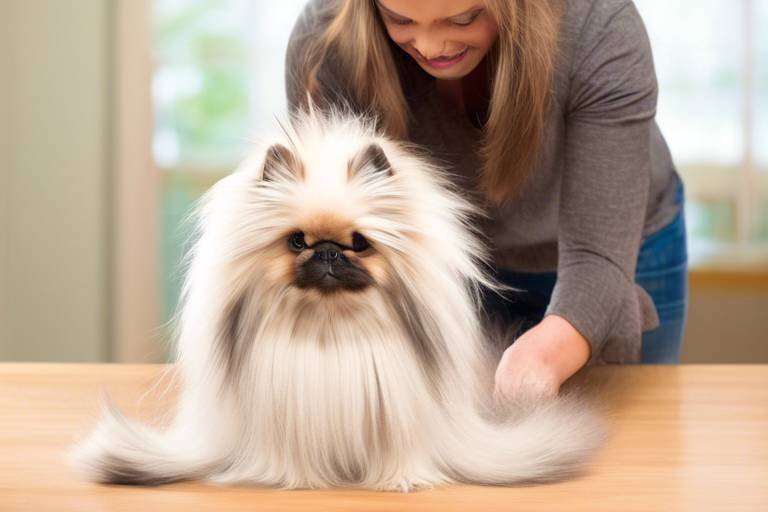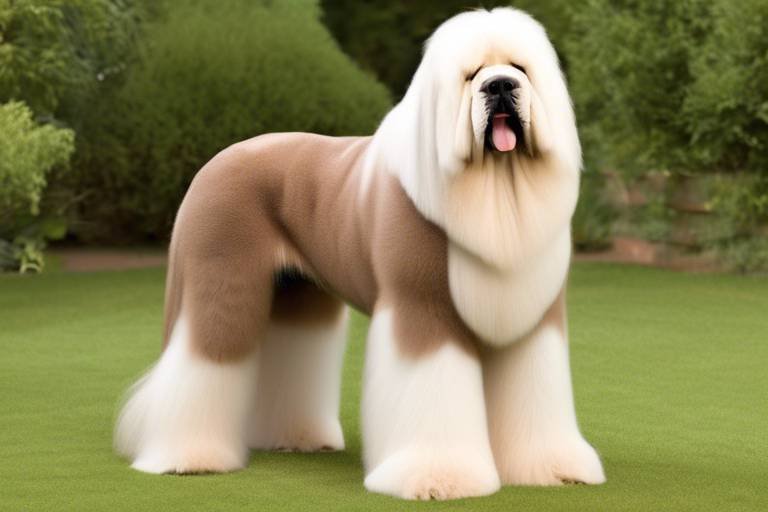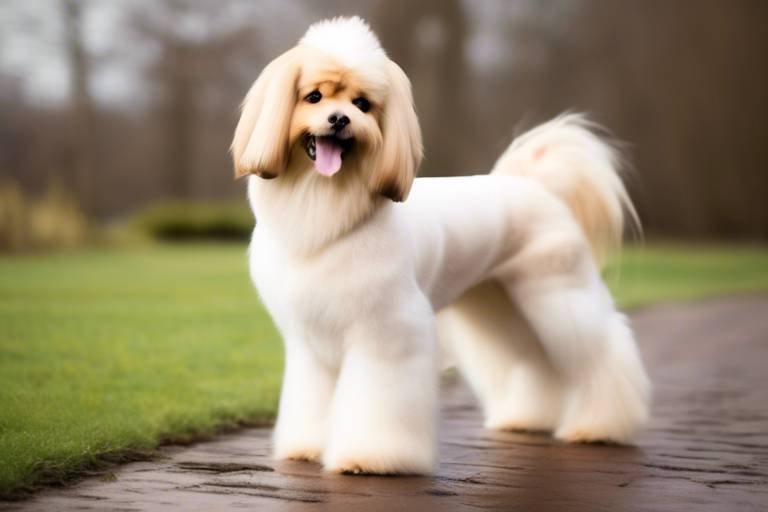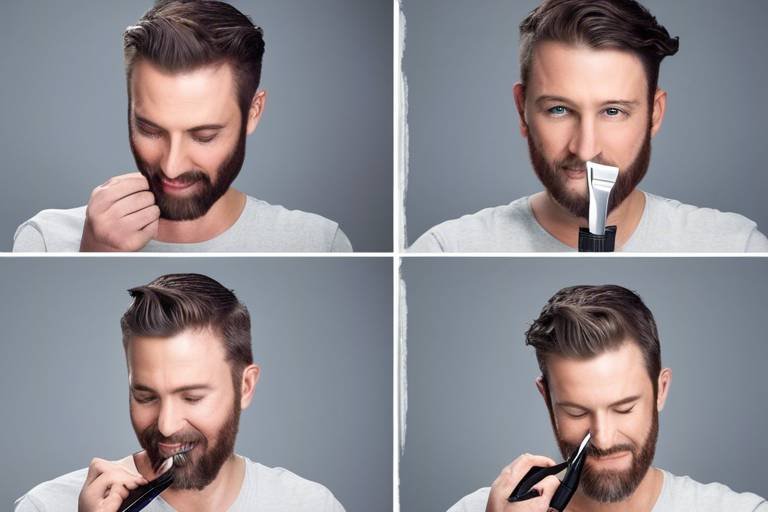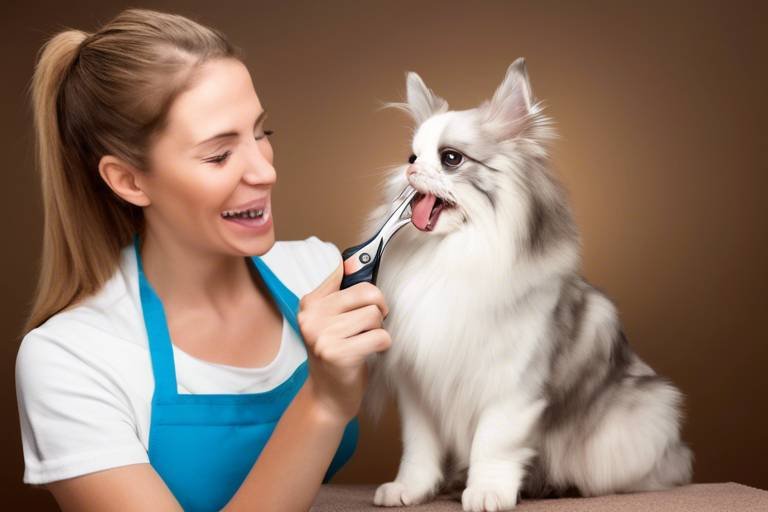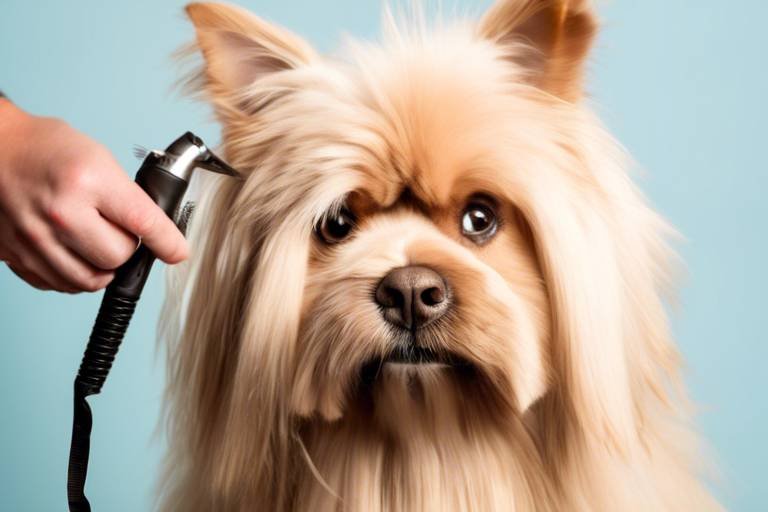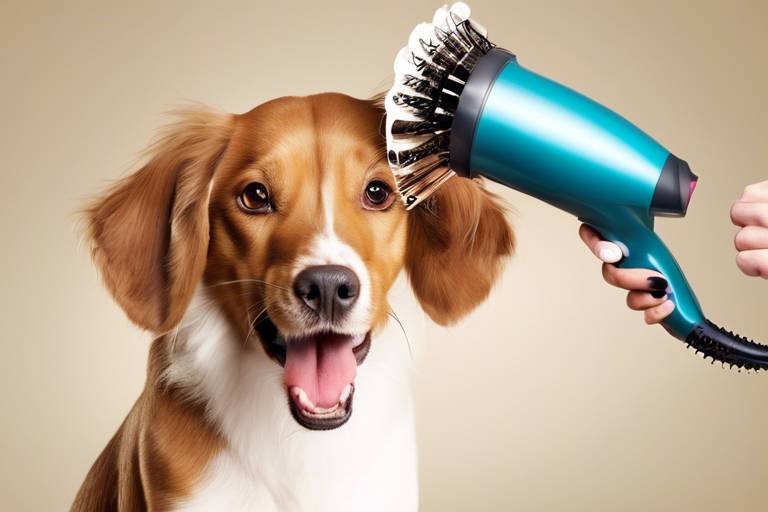The Importance of Grooming in Preventing Hot Spots
When it comes to our furry friends, grooming is more than just a beauty routine; it's a vital part of their overall health and well-being. Regular grooming is essential for preventing hot spots—those pesky, painful skin irritations that can make your pet's life miserable, especially during the warmer months. Imagine how uncomfortable it must be for your pet, constantly scratching and licking at an irritated patch of skin. By taking the time to groom your pet regularly, you can help keep their coat healthy and their skin free from irritants.
Hot spots, or acute moist dermatitis, develop when a pet's skin becomes inflamed and infected due to various factors, including allergies, moisture, and dirt build-up. Just like how we feel when we have a rash or itch, our pets can experience significant discomfort. Regular grooming helps prevent these issues by ensuring that their coat is clean, free of tangles, and devoid of debris that can lead to skin problems.
Moreover, grooming isn't just about aesthetics; it’s a bonding activity that allows you to check for any unusual lumps, bumps, or skin irritations that may require attention. Think of grooming as a health check-up in disguise! By establishing a grooming routine, you can easily monitor your pet's skin condition and overall health. So, whether you’re brushing, bathing, or just spending quality time with your pet, remember that grooming is a crucial step in keeping hot spots at bay.
In the next sections, we will delve deeper into understanding hot spots, the role of grooming, and how to identify risk factors. By the end, you’ll be equipped with the knowledge to keep your pet happy, healthy, and free from those irritating hot spots!
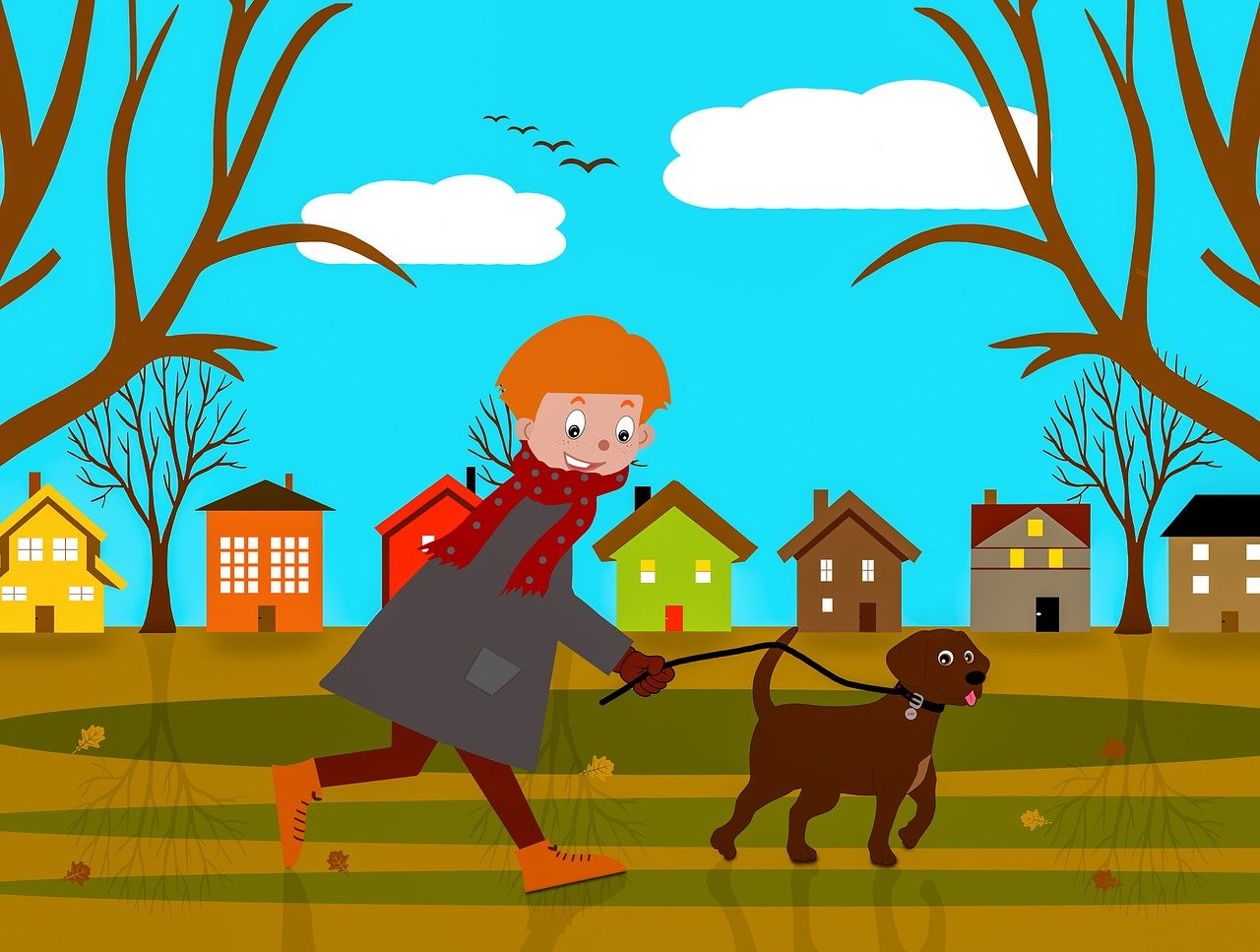
Understanding Hot Spots
Hot spots, also known as acute moist dermatitis, are localized skin infections that can cause significant discomfort to our furry friends. Imagine a painful, itchy patch on your skin that just won't go away—this is what your pet experiences when they develop a hot spot. These conditions often arise suddenly and can escalate quickly if not addressed promptly. Hot spots are typically characterized by red, inflamed areas of skin that may ooze or have a foul odor. They are most commonly found on the head, neck, and hips of pets, but they can appear anywhere on the body.
Recognizing the symptoms early is key to preventing further complications. Common signs of hot spots include:
- Excessive licking or scratching at a particular area
- Redness or inflammation of the skin
- Hair loss around the affected area
- Discharge or a foul smell
- Swelling or warmth to the touch
If you notice any of these symptoms, it’s essential to take action. Left untreated, hot spots can lead to more severe skin infections, discomfort, and even the need for surgical intervention in extreme cases. The good news is that with proper grooming and care, many of these issues can be avoided.
But what causes these pesky hot spots in the first place? A variety of factors can contribute to their development, including:
- Moisture: Pets that spend a lot of time in water or have a tendency to drool may find themselves dealing with hot spots more frequently.
- Allergies: Allergic reactions to food, fleas, or environmental factors can lead to itching and scratching, creating an ideal environment for hot spots to form.
- Inadequate grooming: A lack of regular grooming can result in matted fur and trapped dirt, both of which can irritate the skin and lead to infections.
Understanding these factors can help pet owners take proactive measures to keep their pets healthy and comfortable. Regular grooming not only helps to keep the coat clean and free from tangles but also allows for early detection of any skin issues. So, the next time you brush your pet, think of it as a bonding experience that also serves a vital health purpose!
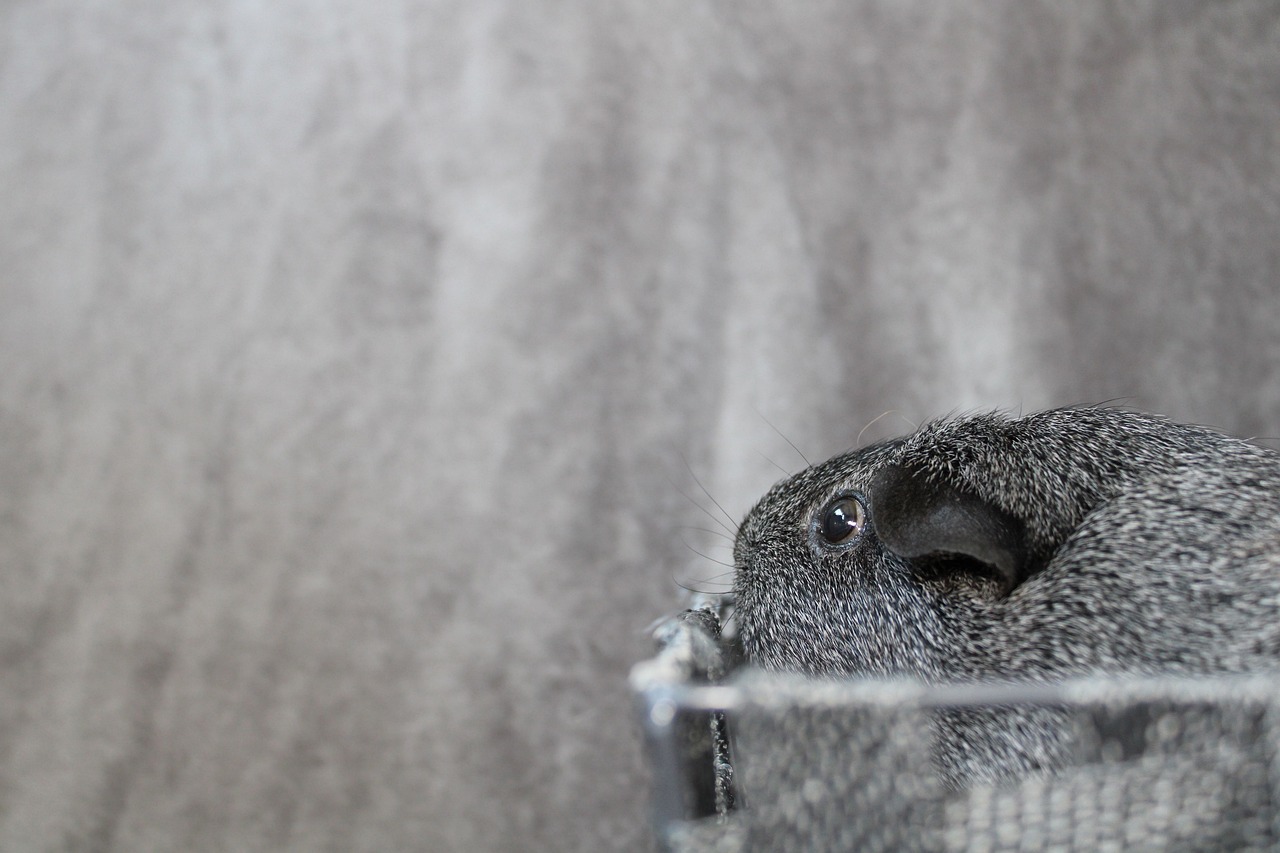
The Role of Regular Grooming
Regular grooming is not just about keeping your pet looking fabulous; it plays a vital role in maintaining their overall health. Think of grooming as a form of preventive care—much like regular check-ups for yourself. By making grooming a routine part of your pet's life, you can help them avoid the discomfort and pain associated with hot spots. These pesky skin irritations often stem from a lack of attention to your pet's coat, leading to tangles, dirt, and debris that can irritate their skin.
When you commit to a regular grooming schedule, you are essentially creating a barrier against potential health issues. The process of brushing and bathing helps to remove dead hair, dirt, and allergens that can accumulate in their fur. This not only keeps their coat shiny and clean but also minimizes the risk of skin infections caused by trapped moisture and bacteria. It's like giving your pet a spa day, but with the added benefit of health!
Moreover, grooming offers a perfect opportunity for you to check your pet's skin for any abnormalities. As you brush through their fur, you can easily spot lumps, bumps, or any signs of irritation that may require veterinary attention. This proactive approach can make a world of difference in catching issues before they escalate into something more serious.
Using the right brushing techniques is essential in ensuring your grooming sessions are effective. Different breeds have different coat types, which means they require specific brushing methods. For example, long-haired breeds may need a slicker brush to prevent matting, while short-haired breeds might benefit from a rubber grooming mitt that removes loose fur while providing a gentle massage.
Here are some effective brushing techniques to consider:
- Start Slowly: Begin by gently brushing areas where your pet is comfortable being touched.
- Work in Sections: Divide your pet's coat into manageable sections to ensure thorough grooming.
- Be Gentle: Use a light hand, especially around sensitive areas like the belly and ears.
Choosing the right grooming tools can significantly enhance the experience for both you and your pet. Here’s a quick overview of some essential tools:
| Tool | Best For |
|---|---|
| Slicker Brush | Long-haired breeds to prevent tangling |
| Rubber Grooming Mitt | Short-haired breeds for gentle fur removal |
| Flea Comb | Identifying and removing fleas and ticks |
| De-shedding Tool | Reducing shedding, especially during seasonal changes |
Determining how often to groom your pet depends on several factors, including their coat type, shedding patterns, and activity levels. For instance, long-haired dogs may require grooming several times a week to prevent mats, while short-haired breeds might only need a good brush once a week. It's essential to tailor the grooming frequency to your pet's specific needs, as this will not only keep their coat healthy but also minimize the risk of hot spots.
In conclusion, regular grooming is a fundamental aspect of pet care that goes beyond aesthetics. It’s about ensuring your furry friend stays healthy, comfortable, and free from the distressing effects of hot spots. So, grab those brushes and make grooming a fun bonding activity for you and your pet!
Q: How often should I groom my pet?
A: The frequency of grooming depends on your pet's coat type. Long-haired breeds may need grooming several times a week, while short-haired breeds might only need it once a week.
Q: What tools do I need for grooming?
A: Essential tools include a slicker brush for long-haired pets, a rubber grooming mitt for short-haired pets, a flea comb, and a de-shedding tool for seasonal shedding.
Q: Can I groom my pet at home?
A: Absolutely! Regular grooming at home can be a great bonding experience. Just ensure you have the right tools and techniques, and don't hesitate to consult a professional groomer for guidance.
Brushing Techniques
When it comes to keeping your furry friend comfortable and healthy, mastering the art of brushing is essential. Just like how we feel fresh and revitalized after a good hair day, our pets thrive when their coats are well-maintained. The right brushing techniques can make a world of difference, not only in preventing those pesky hot spots but also in enhancing the bond between you and your pet. So, let’s dive into some effective brushing techniques that can keep your pet looking fabulous and feeling great!
First and foremost, it's important to understand that different breeds have unique grooming needs. For instance, long-haired breeds like Yorkshire Terriers or Persian Cats require a different approach compared to short-haired breeds like Beagles or Boxers. Long-haired pets tend to develop tangles and mats, which can trap moisture and lead to skin irritations. To tackle this, start by using a wide-toothed comb to gently detangle any knots before switching to a slicker brush for a smooth finish. This two-step process ensures that you're not just brushing over the surface but actually addressing any underlying issues that could lead to discomfort.
On the other hand, short-haired breeds benefit from a different technique. Using a rubber grooming mitt or a bristle brush can effectively remove loose fur and stimulate the skin, promoting healthy oil distribution. This not only helps in keeping their coat shiny but also reduces shedding around your home. Remember, brushing short-haired pets can be a quick and enjoyable experience, often resembling a gentle massage that they’ll love!
Now, let's talk about the direction of your brush strokes. Always brush in the direction of hair growth. This technique minimizes discomfort and helps to avoid damaging the skin. For dogs, start from the head and move towards the tail, while for cats, begin at the neck and work your way down. If you encounter any tangles, be patient. Use your fingers to gently separate the fur before brushing it out, rather than yanking at it. Think of it like untying a knot in your shoelaces; a little patience goes a long way!
In addition to the brushing techniques, it’s crucial to establish a regular grooming schedule. Depending on the breed, this could range from daily to weekly sessions. Keeping a consistent routine not only helps in maintaining a healthy coat but also allows you to monitor your pet’s skin condition closely. If you notice any unusual changes, such as redness or excessive scratching, it might be time to consult with your veterinarian.
To summarize, here are some key brushing techniques to keep in mind:
- Understand your pet's breed-specific grooming needs.
- Use the appropriate tools for effective brushing.
- Brush in the direction of hair growth to avoid discomfort.
- Establish a regular grooming schedule to maintain coat health.
By incorporating these brushing techniques into your routine, you can significantly reduce the risk of hot spots and ensure that your pet feels their best. Remember, grooming isn’t just about aesthetics; it’s a vital part of your pet’s overall health and happiness. So grab that brush and make grooming a fun bonding experience!
Q: How often should I brush my pet?
A: The frequency of brushing depends on your pet's breed and coat type. Long-haired pets may need daily brushing, while short-haired breeds can often be brushed weekly.
Q: What tools should I use for brushing?
A: Use a slicker brush for long-haired pets and a rubber grooming mitt or bristle brush for short-haired breeds. Always choose tools that are suitable for your pet's specific coat type.
Q: Can brushing too much harm my pet?
A: While regular brushing is beneficial, excessive brushing can irritate the skin. Always be gentle and attentive to your pet's comfort level during grooming sessions.
Q: What should I do if I find a hot spot?
A: If you discover a hot spot, it's essential to keep the area clean and dry. Avoid further irritation by preventing your pet from licking the area, and consult your veterinarian for appropriate treatment.
Tools for Effective Brushing
When it comes to grooming your furry friend, having the right tools can make all the difference. Think of grooming tools as your secret weapons in the battle against hot spots and skin irritations. Just like a chef needs the right knives to create a masterpiece, pet owners need effective grooming tools to keep their pets looking and feeling their best. So, what should you have in your grooming arsenal?
First off, brushes are essential. Depending on your pet's coat type, you might need a slicker brush, a bristle brush, or a pin brush. Slicker brushes are fantastic for removing mats and tangles, especially in long-haired breeds, while bristle brushes work wonders for short-haired dogs by distributing natural oils and keeping the coat shiny. It's crucial to choose a brush that suits your pet's specific needs, ensuring comfort and effectiveness during grooming sessions.
Next up, combs are invaluable for detailed grooming. A wide-toothed comb can help detangle knots without pulling on your pet's skin, while a fine-toothed comb is perfect for checking for pests like fleas or ticks. Regularly using a comb can also help you identify any skin issues early on, giving you a leg up in preventing hot spots before they become a problem.
Now, let’s talk about de-shedding tools. If your pet sheds a lot, investing in a de-shedding tool can save you from a house full of fur and, more importantly, reduce the risk of hair accumulating on the skin, which can lead to irritation. These tools are designed to remove loose undercoat without damaging the top layer of fur, making them a must-have for any pet owner.
Finally, don’t forget to include grooming gloves in your toolkit. These handy gloves not only allow you to bond with your pet while brushing but also make the process enjoyable for them. The gentle massaging action can help calm anxious pets and promote relaxation, turning grooming into a delightful experience rather than a chore.
In summary, having the right tools for effective brushing is essential in maintaining your pet's coat health and preventing hot spots. Whether it’s brushes, combs, de-shedding tools, or grooming gloves, each tool plays a vital role in keeping your furry friend comfortable and happy. Remember, a well-groomed pet is a healthy pet!
- How often should I brush my pet? The frequency of brushing depends on your pet's coat type. Long-haired breeds may require daily brushing, while short-haired breeds might only need grooming once a week.
- Can I use human grooming tools on my pet? It's best to use tools specifically designed for pets. Human grooming tools may not be effective and could irritate your pet's skin.
- What should I do if I find a hot spot? If you notice a hot spot, it's important to keep the area clean and dry. Consult with your veterinarian for appropriate treatment options.
- Are there specific brushes for different breeds? Yes, different breeds have different coat types that require specific grooming tools. Research your pet's breed to find the best tools for their grooming needs.
Frequency of Grooming
When it comes to grooming your beloved pet, one size definitely does not fit all. The should be tailored to each pet's individual needs, taking into account factors such as their coat type, shedding patterns, and activity levels. For instance, long-haired breeds like Yorkshire Terriers or Persian Cats may require more frequent grooming sessions—often several times a week—to prevent tangles and mats from forming. On the other hand, short-haired breeds like Beagles or Boxers might only need grooming every couple of weeks, as they tend to shed less and require less maintenance.
It's also essential to consider your pet's lifestyle. If your furry friend loves to romp around outside, they're likely to pick up dirt, debris, and even allergens that can lead to skin irritations like hot spots. In such cases, a more frequent grooming schedule can help keep their coat clean and their skin healthy. For example, if your dog loves to swim or play in the mud, a weekly grooming routine can help keep their coat in top shape and minimize the risk of developing those pesky hot spots.
Here’s a quick breakdown of grooming frequency based on coat types:
| Coat Type | Recommended Grooming Frequency |
|---|---|
| Long-haired | 2-3 times a week |
| Medium-haired | Once a week |
| Short-haired | Every 2-4 weeks |
Moreover, regularly checking your pet's skin during grooming sessions can help you catch any early signs of irritation or infection. Look for redness, swelling, or excessive scratching, which can indicate that your pet is struggling with something more serious. If you notice any of these signs, it's a good idea to consult your veterinarian to ensure your pet receives the appropriate care.
In conclusion, establishing a grooming routine that aligns with your pet's specific needs is crucial for maintaining their overall health and well-being. Not only does regular grooming help prevent hot spots, but it also strengthens the bond between you and your furry friend. So grab that brush, set a schedule, and enjoy some quality time with your pet!
- How often should I groom my dog? The frequency depends on the breed and coat type. Long-haired dogs may need grooming several times a week, while short-haired breeds may only need it every few weeks.
- Can I groom my pet at home? Absolutely! Regular grooming at home is a great way to bond with your pet and keep their coat healthy. Just ensure you have the right tools for their coat type.
- What should I do if I find a hot spot? If you notice a hot spot, it's important to keep the area clean and dry. Consult your veterinarian for appropriate treatment options.
Bathing and Skin Care
Bathing your pet is not just about keeping them smelling fresh; it's a vital part of their overall skin health and well-being. Regular baths can help remove dirt, allergens, and excess oils that accumulate on the skin and coat. When left unchecked, these elements can lead to skin irritations and, ultimately, hot spots. Think of bathing as giving your pet a refreshing spa day—who wouldn't feel better after a good wash?
Choosing the right shampoo is crucial. Not all pet shampoos are created equal! Look for products that are specifically formulated for your pet's skin type. For instance, if your furry friend has sensitive skin, opt for hypoallergenic shampoos that are free from harsh chemicals. These gentle formulas help maintain the natural oils in your pet's skin, preventing dryness and irritation. Additionally, consider the following factors when selecting a shampoo:
| Shampoo Type | Best For |
|---|---|
| Hypoallergenic | Pets with sensitive skin |
| Medicated | Pets with skin conditions |
| Deodorizing | Pets with strong odors |
| Moisturizing | Pets with dry skin |
When it comes to the bathing process, it's essential to make it a positive experience for your pet. Start by brushing their coat to remove any tangles or loose fur—this will make bathing easier and more effective. Use lukewarm water, as extreme temperatures can be uncomfortable for your pet. Gently massage the shampoo into their coat, ensuring that you avoid their eyes and ears. Rinse thoroughly to remove all traces of shampoo, as residue can irritate their skin.
After bathing, it's beneficial to dry your pet properly. You can use a towel to absorb excess moisture, but if your pet is comfortable with it, a low-heat blow dryer can help speed up the drying process. Just be sure to keep it at a safe distance to avoid overheating their skin. Once your pet is dry, take a moment to inspect their skin for any signs of irritation or hot spots, as early detection is key to preventing further issues.
In addition to bathing, regular skin care is essential. This includes checking for any signs of dryness, redness, or irritation, especially in areas that are prone to moisture accumulation, such as between the toes or under the armpits. If you notice any concerning symptoms, don’t hesitate to consult your veterinarian. They can recommend appropriate treatments or adjustments to your grooming routine to keep your pet's skin healthy and irritation-free.
- How often should I bathe my pet? - Generally, pets should be bathed every 4 to 6 weeks, but this can vary based on their activity level and coat type.
- Can I use human shampoo on my pet? - No, human shampoos can disrupt the pH balance of your pet's skin. Always use pet-specific shampoos.
- What should I do if I notice a hot spot? - Consult your veterinarian for proper diagnosis and treatment to prevent further complications.
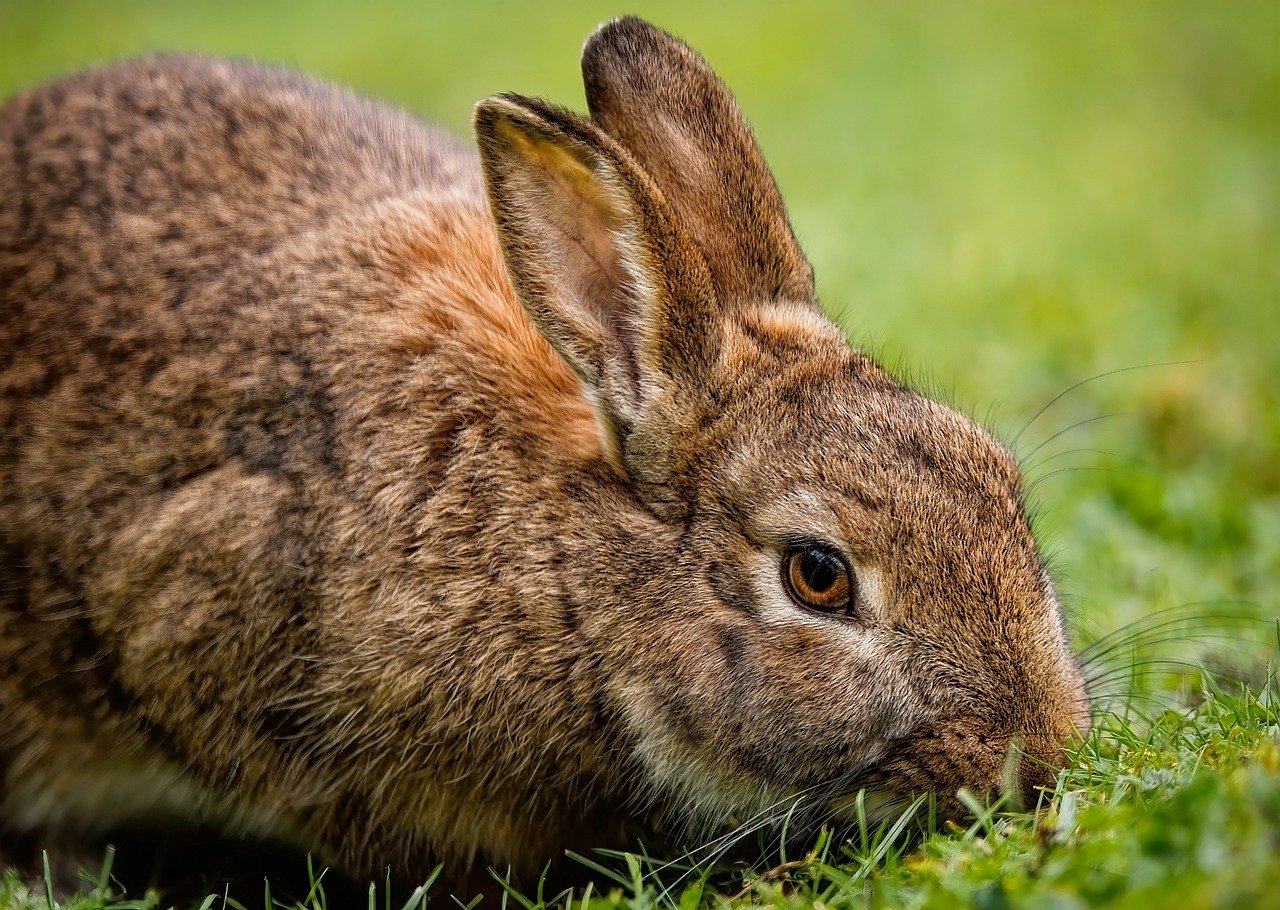
Identifying Risk Factors
When it comes to keeping our furry friends healthy, understanding the risk factors that contribute to hot spots is essential. Hot spots can be a real pain—literally! They are often the result of various underlying issues that can make our pets more susceptible to these irritating skin conditions. So, what should you be on the lookout for? Let’s dive into the factors that can increase the likelihood of hot spots.
First and foremost, allergies are a significant culprit. Just like humans, pets can suffer from allergies to food, pollen, dust mites, and even certain materials. These allergies can lead to skin irritation, causing pets to scratch or lick excessively, which can create the perfect environment for hot spots to develop. If your pet is frequently scratching or has red, inflamed skin, it’s time to investigate further. Regular grooming can help manage these symptoms by removing allergens and keeping the coat clean.
Another important factor is moisture retention. Pets that love to swim or play in wet grass can find themselves at risk. Moisture trapped in their fur can lead to skin infections, especially if the coat isn't dried properly afterward. Ensuring your pet is dry after baths or outdoor play is crucial. Furthermore, in humid weather, pets can sweat, and if they have thick fur, it can become a breeding ground for bacteria and yeast, leading to those pesky hot spots.
Inadequate grooming is also a major risk factor. If a pet's coat is matted or dirty, it can trap moisture and dirt against the skin, leading to irritation and infection. Regular grooming not only keeps the coat looking fabulous but also helps in identifying any skin issues before they escalate. For instance, while brushing your pet, you might notice a small red patch or a sore that needs attention. Catching these issues early can save your pet from a lot of discomfort.
Lastly, certain environmental factors can play a role in the development of hot spots. For example, pets that spend a lot of time outdoors during warm weather may be more prone to these skin irritations. High temperatures and humidity can exacerbate skin conditions, making it vital to keep an eye on your pet's skin health during the summer months. Providing a cool, dry place for your pet to rest can help mitigate these risks.
In summary, by being aware of these risk factors—allergies, moisture retention, inadequate grooming, and environmental conditions—pet owners can take proactive measures to prevent hot spots from developing. Regular grooming, monitoring your pet's skin, and maintaining a clean environment are all steps that can contribute to your pet's overall health and happiness.
- What are the signs of a hot spot? Look for red, inflamed patches of skin, excessive licking or scratching, and a foul odor.
- How can I prevent hot spots? Regular grooming, keeping your pet dry, and managing allergies can help prevent hot spots.
- When should I see a vet for a hot spot? If you notice severe irritation, signs of infection, or if the hot spot doesn't improve with home care, consult your veterinarian.
Allergies and Skin Sensitivity
When it comes to our furry friends, allergies and skin sensitivity can be major culprits behind uncomfortable conditions like hot spots. Just like humans, pets can develop allergies to a variety of substances, including food ingredients, pollen, dust mites, and even certain fabrics. These allergies can lead to itchy, inflamed skin that makes your pet feel miserable. Imagine having an itch that just won’t go away; it’s no wonder pets often resort to excessive licking or scratching, which can exacerbate the problem.
Understanding the connection between allergies and skin sensitivity is crucial for effective prevention and treatment. When a pet's immune system overreacts to allergens, it can trigger a range of symptoms that manifest in the skin. This can lead to a vicious cycle where the pet's discomfort leads to more irritation, ultimately resulting in hot spots. For instance, if your dog has a food allergy, the resulting skin irritation can become so severe that it leads to painful, infected areas on their skin.
To manage these allergies effectively, pet owners should consider the following:
- Regular Vet Check-ups: Routine visits to the veterinarian can help identify allergies early on. Your vet may recommend allergy testing to pinpoint specific triggers.
- Proper Grooming: Regular grooming helps keep allergens at bay. Brushing your pet frequently can remove dust, pollen, and other irritants from their coat, preventing them from coming into contact with the skin.
- Dietary Adjustments: If food allergies are suspected, a special diet may be necessary. Consult your vet for guidance on hypoallergenic food options.
Moreover, environmental factors play a significant role in how allergies affect your pet. For example, during peak pollen seasons, keeping windows closed and using air purifiers can help reduce exposure. Additionally, if your pet is prone to skin sensitivities, consider using gentle, hypoallergenic shampoos during baths to avoid further irritation.
In conclusion, being proactive about your pet’s skin health is essential. By identifying potential allergens and managing skin sensitivity through grooming and veterinary care, you can significantly reduce the risk of hot spots. Remember, a happy pet is a healthy pet, and taking these steps can make all the difference in keeping your furry friend comfortable and itch-free!
Q: How can I tell if my pet has allergies?
A: Look for symptoms such as excessive scratching, licking, or biting at the skin, red or inflamed areas, and hair loss. If you notice these signs, consult your veterinarian.
Q: What should I do if my pet develops a hot spot?
A: Keep the area clean and dry, prevent your pet from licking or scratching it, and contact your veterinarian for advice on treatment options.
Q: Can allergies be cured?
A: While many allergies cannot be cured, they can be managed effectively through proper care, including grooming, medication, and dietary changes.
Q: How often should I groom my pet to prevent hot spots?
A: The frequency of grooming depends on your pet’s coat type and shedding patterns. Generally, regular grooming every few weeks is recommended, but some pets may require more frequent grooming.
Environmental Factors
When it comes to the health of our beloved pets, play a significant role in the development of hot spots. These pesky skin irritations thrive in conditions that promote moisture and heat, making it essential for pet owners to be aware of their surroundings. For instance, high humidity levels can create a breeding ground for bacteria and fungi, which can lead to skin infections. Imagine your pet's skin as a garden; if the conditions are too damp, weeds (or in this case, infections) can take root and flourish.
Moreover, seasonal changes can also impact your pet's skin health. During the warmer months, pets are more likely to sweat and accumulate moisture in their fur, especially in areas where their skin folds or where they have thick fur. This can lead to a perfect storm for hot spots to develop. It's crucial to monitor your pet's grooming routine during these times. Regular grooming not only removes excess fur but also helps to ensure that their skin remains dry and free from irritants.
Here are some key environmental factors to consider:
- Humidity: High humidity can trap moisture in your pet's fur, leading to skin irritation.
- Temperature: Warm temperatures can increase sweating, which may contribute to the development of hot spots.
- Allergens: Pollen, dust mites, and mold can exacerbate skin sensitivities, making pets more prone to hot spots.
- Wet conditions: Rainy weather or swimming can leave your pet's coat damp for extended periods, promoting skin issues.
To combat these environmental challenges, pet owners should take proactive steps. For example, after walks in wet grass or after swimming, it's a good idea to thoroughly dry your pet's coat. Additionally, consider investing in a dehumidifier if you live in a particularly humid area. Just like we adapt our wardrobes to the changing seasons, our pets may need adjustments in their grooming routines to keep their skin happy and healthy.
In conclusion, being mindful of the environmental factors that affect your pet's skin health is crucial. By understanding and addressing these elements, you can significantly reduce the risk of hot spots and ensure that your furry friend remains comfortable and healthy.
Q1: What are hot spots?
A1: Hot spots, or acute moist dermatitis, are localized skin infections that can cause discomfort and pain in pets. They often appear as red, inflamed patches on the skin.
Q2: How can I prevent hot spots in my pet?
A2: Regular grooming, maintaining a clean and dry environment, and monitoring for allergies are key steps in preventing hot spots. Consistent bathing with suitable shampoos can also help.
Q3: When should I take my pet to the vet for hot spots?
A3: If you notice excessive licking, severe irritation, or signs of infection such as pus or a foul odor, it’s important to seek veterinary care immediately.
Q4: Can hot spots occur in any breed of pet?
A4: Yes, hot spots can affect any breed, but some breeds with thick or long fur are more prone to developing them due to moisture retention.

When to Seek Veterinary Help
Recognizing when your furry friend needs professional help is crucial in ensuring their health and comfort. Hot spots can escalate quickly, turning from a minor irritation into a significant issue if not addressed promptly. So, what should you be looking out for? First and foremost, if you notice your pet excessively licking, biting, or scratching a particular area, it’s a clear sign that something isn't right. This behavior often indicates discomfort or pain, which could be due to a hot spot or another underlying issue.
Additionally, keep an eye out for any visible changes in your pet's skin. If you see signs of severe irritation, such as redness, swelling, or oozing, it's time to consult your veterinarian. These symptoms can indicate an infection, which requires medical attention. Remember, while it might be tempting to wait and see if the issue resolves on its own, early intervention can prevent complications and save your pet from unnecessary suffering.
Another critical indicator is if the hot spot appears to be spreading or if your pet shows signs of distress, such as whining or hiding. In such cases, don’t hesitate to reach out to your vet. They can provide a proper diagnosis and recommend treatment options, which may include topical medications, antibiotics, or even an Elizabethan collar to prevent further irritation.
| Signs to Watch For | Action to Take |
|---|---|
| Excessive licking or scratching | Consult a veterinarian |
| Visible redness or swelling | Seek immediate veterinary care |
| Oozing or crusting on the skin | Schedule an appointment with your vet |
| Behavior changes (whining, hiding) | Contact your veterinarian |
In summary, being proactive about your pet's grooming and health can make all the difference. Regular grooming not only helps in preventing hot spots but also allows you to spot any potential issues early on. Remember, your vet is your best ally in keeping your pet healthy and happy, so don't hesitate to seek their expertise whenever you're in doubt.
- What are hot spots? Hot spots are localized skin infections that can cause irritation and discomfort in pets.
- How can I prevent hot spots? Regular grooming, bathing, and monitoring your pet's skin health can help prevent hot spots.
- When should I take my pet to the vet for a hot spot? If you notice excessive licking, visible irritation, or oozing, it's time to seek veterinary help.
- Can hot spots be treated at home? While minor cases might be managed at home, it's always best to consult a veterinarian for proper treatment.
Frequently Asked Questions
- What are hot spots in pets?
Hot spots, also known as acute moist dermatitis, are painful, localized skin infections that can develop on pets. They often appear as red, inflamed patches and can cause significant discomfort, leading to excessive licking or scratching by the pet.
- How can regular grooming help prevent hot spots?
Regular grooming helps keep your pet's coat clean and free from tangles, dirt, and debris. By removing loose fur and allergens, grooming minimizes the risk of skin irritations and hot spots, especially in warm weather when pets are more prone to skin issues.
- What brushing techniques are effective for different breeds?
Different breeds have unique coat types that require specific brushing techniques. For instance, long-haired breeds might benefit from a slicker brush, while short-haired breeds may only need a bristle brush. It's essential to research the best methods for your pet's breed to maintain optimal coat health.
- How often should I groom my pet?
The frequency of grooming depends on your pet's coat type, shedding patterns, and activity levels. Generally, long-haired pets may need grooming several times a week, while short-haired pets could be groomed less frequently. Adjust the schedule based on your pet's individual needs.
- What role does bathing play in preventing hot spots?
Regular bathing with appropriate pet shampoos helps maintain your pet's skin health by removing allergens, dirt, and excess oils. This practice can prevent the buildup of irritants that may lead to hot spots if not managed properly.
- What are some risk factors for developing hot spots?
Several factors can increase a pet's susceptibility to hot spots, including allergies, skin sensitivity, moisture retention, and inadequate grooming. Being aware of these risks allows pet owners to take proactive measures to protect their pets.
- When should I seek veterinary help for my pet's hot spot?
If you notice signs of severe irritation, excessive licking, or any signs of infection, it's crucial to seek veterinary attention. Prompt treatment can help prevent further complications and ensure your pet's recovery.


